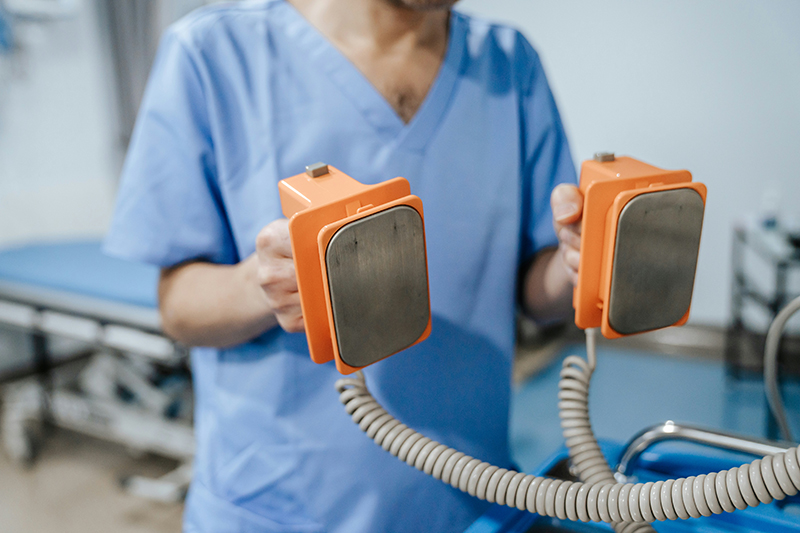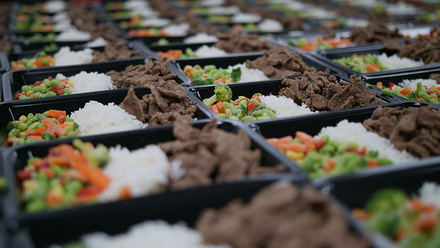Miniature soft batteries for biomedical applications
Researchers at the University of Oxford, UK, have made progress towards realising miniature soft batteries for biomedical applications

They are using ‘dropletronics’ – microscale, droplet-based, modular iontronics.
As implantable electronic devices get smaller to enhance patient care, the batteries in them also need to decrease in size – while increasing in power. To be minimally invasive, these devices also need to be soft, biocompatible and biodegradable.
The Oxford team has developed a miniature, soft, lithium-ion (Li-ion) battery constructed from biocompatible silk-hydrogel droplets. This could improve the functionality of applications including defibrillators and pacemakers. They have used surfactant-supported assembly to connect three microscale droplets of 10 nanolitres volume.
The paper in nature chemical engineering describes how a single Li-ion droplet battery comprises three silk-hydrogel droplets that contain lithium manganese oxide and carbon nanotubes in the cathode droplet; lithium titanate particles and carbon nanotubes in the anode droplet; and a central drop containing lithium chloride as a separator.
The three droplets are deposited in a lipid-containing oil using a microinjector. 'The droplets were initially surrounded by monolayers of lipid, which formed droplet interface bilayers within seconds upon contact with one another, thereby creating a stabilised, support-free structure,' reads the paper – A microscale soft lithium-ion battery for tissue stimulation.
The scientists have, in turn, created a miniaturised ionic power source. 'The power source mimics the electrical eel by using internal ion gradients to generate ionic current, and can induce neuronal modulation,' the paper adds.
It explains how the silk-hydrogel’s elastic behaviour affords the device flexibility and compressibility with a modulus of ~10kPa at 80% compression, alongside stable support of the embedded Li particles and carbon nanotubes, 'creating high electrical conductivity between the two electrodes of around 41.3mScm−1.'
The battery is activated by UV light, and is rechargeable and biodegradable after use, reports the team. The light crosslinks the hydrogel and breaks the lipid barrier between the droplets.
The researchers believe it is currently the smallest, hydrogel, Li-ion battery published, with a superior energy density.
Lead researcher Dr Yujia Zhang explains how surfactant-supported assembly is significant in delivering this progress. 'For conventional, soft-gel-based batteries, manual assembly of pre-crosslinked compartments, or multistep deposition and crosslinking, is necessary to avoid the mixing of materials from different compartments at the pre-gel (liquid) state or during the gelation process.
'This limitation not only makes it difficult to shrink hydrogel-based functional architectures, but also hinders the implementation of high-density energy storage.
'For droplet batteries, the surfactant-supported assembly allowed us to directly put multiple droplets containing different materials together, avoiding the mixture of distinct materials and loss of functionality.'
By testing the proof-of-concept device on mice hearts, the team could observe how the droplet battery powers the movement of charged molecules between synthetic cells to control the beating and defibrillation of these hearts.
The battery can also function as a mobile energy carrier, by including magnetic particles to control movement.
Its appeal is partly the potential for 3D droplet printers to automate deposition, facilitating scalable fabrication.
However, the paper reports four remaining significant concerns: 1. Conventional Li-ion batteries produce more power than this stored salt gradient currently does and the device cannot be fully recharged. 2. The need for temperature-triggered gelation and oil for buffer exchange to activate the power source is demanding and limiting. 3. The power source is so far limited to the generation of ionic output. 4. While the power source can modulate the activity of neural microtissues, it cannot be used in organ-level stimulation, which requires a higher and more stable output performance in physiological environments.
The next stage is to optimise the in vivo use of droplet batteries and control the ion moments inside the droplets.







